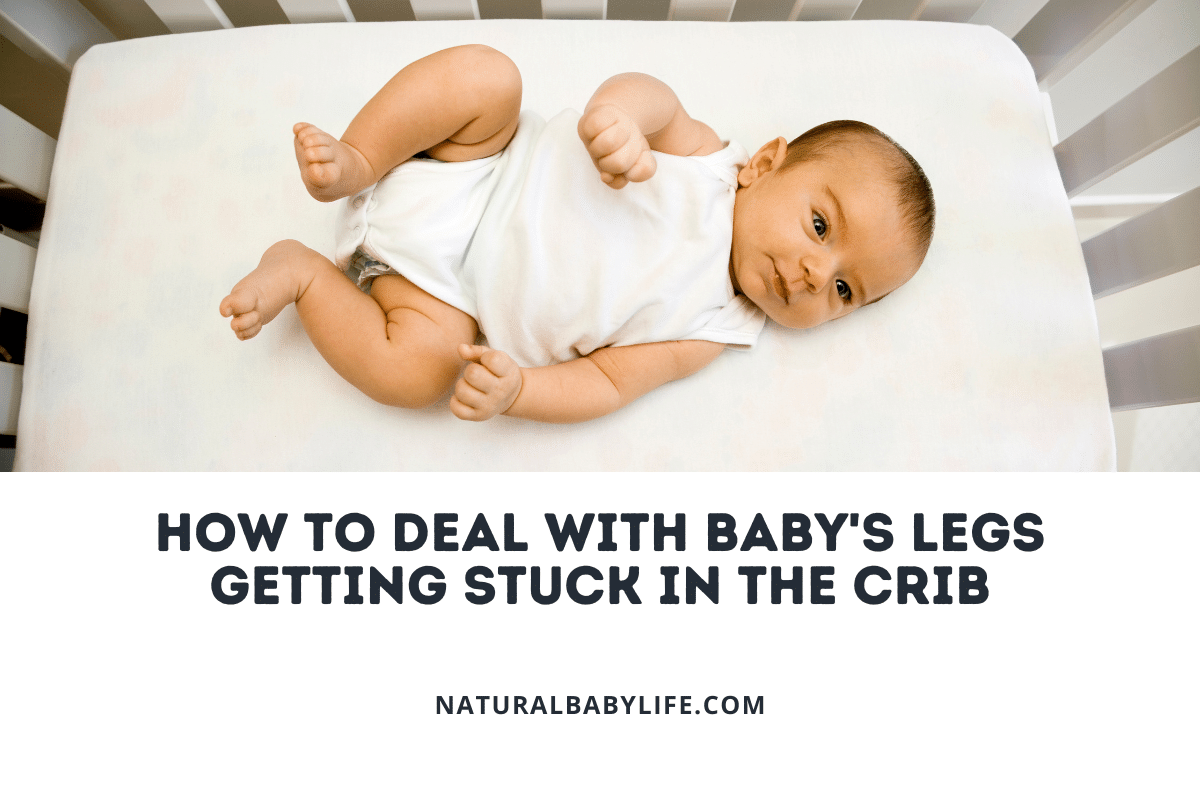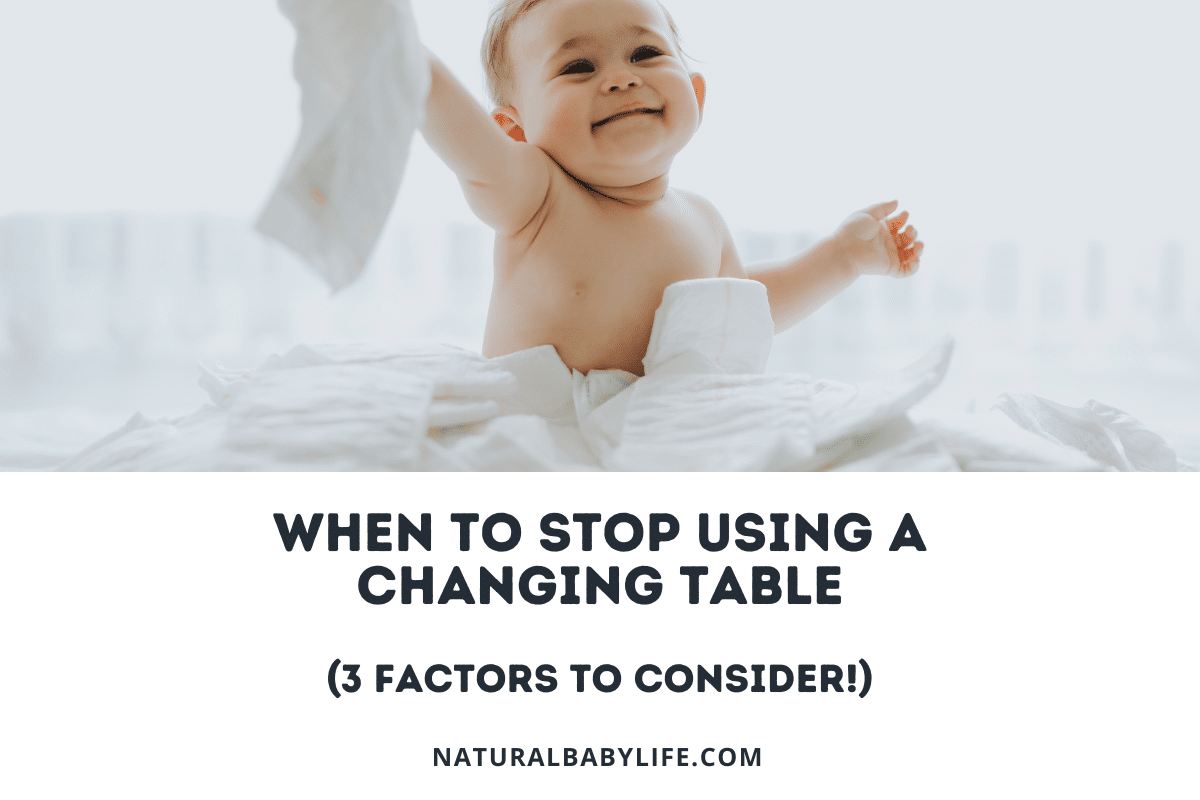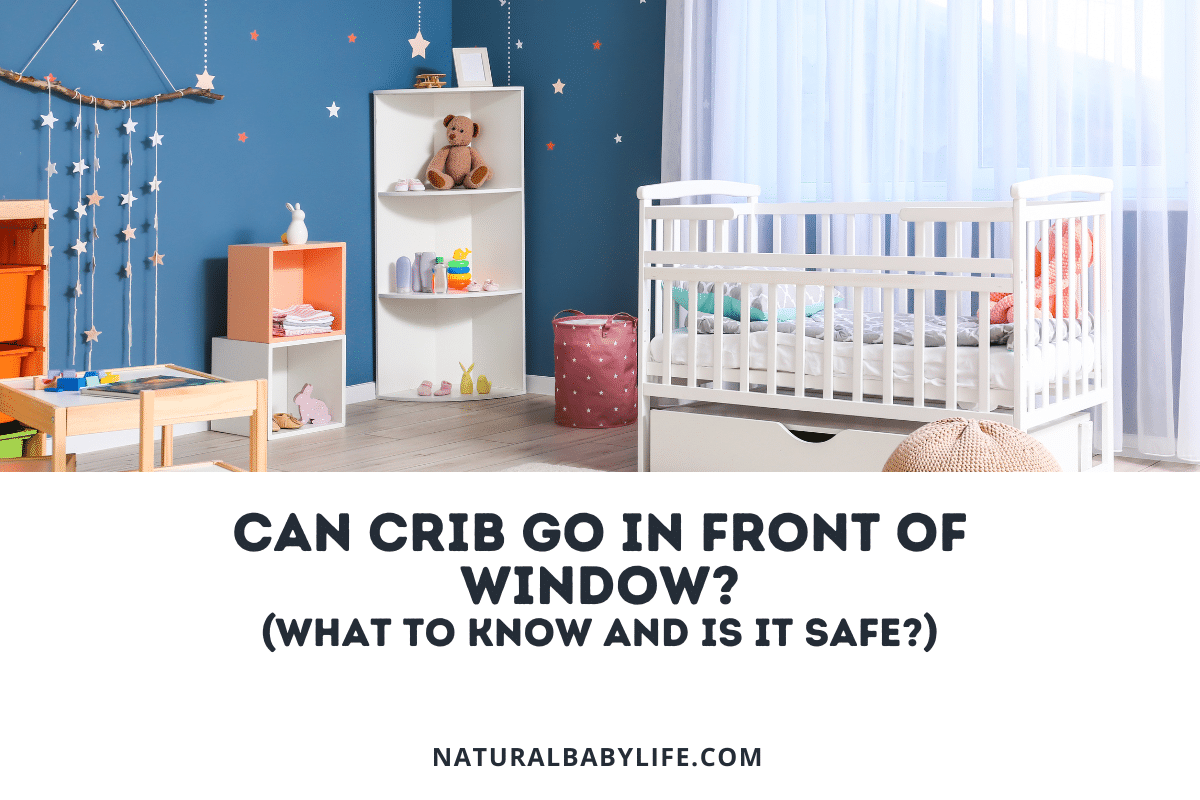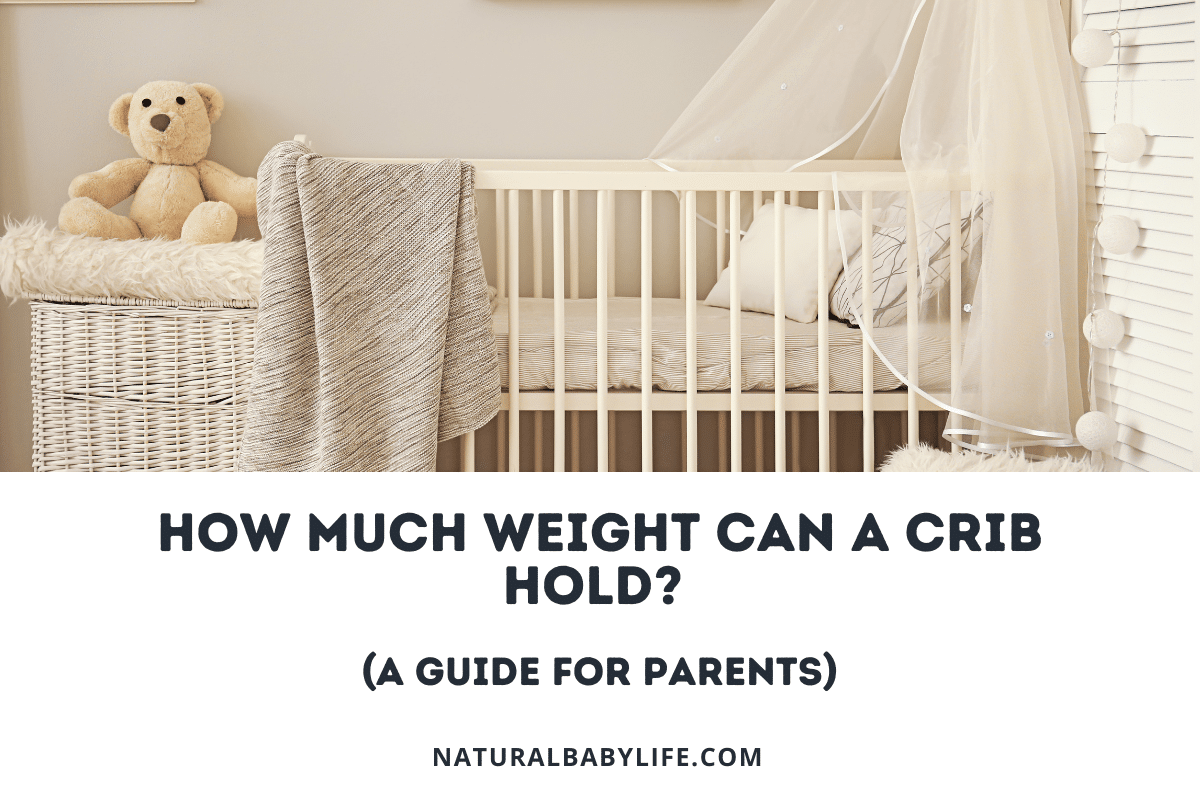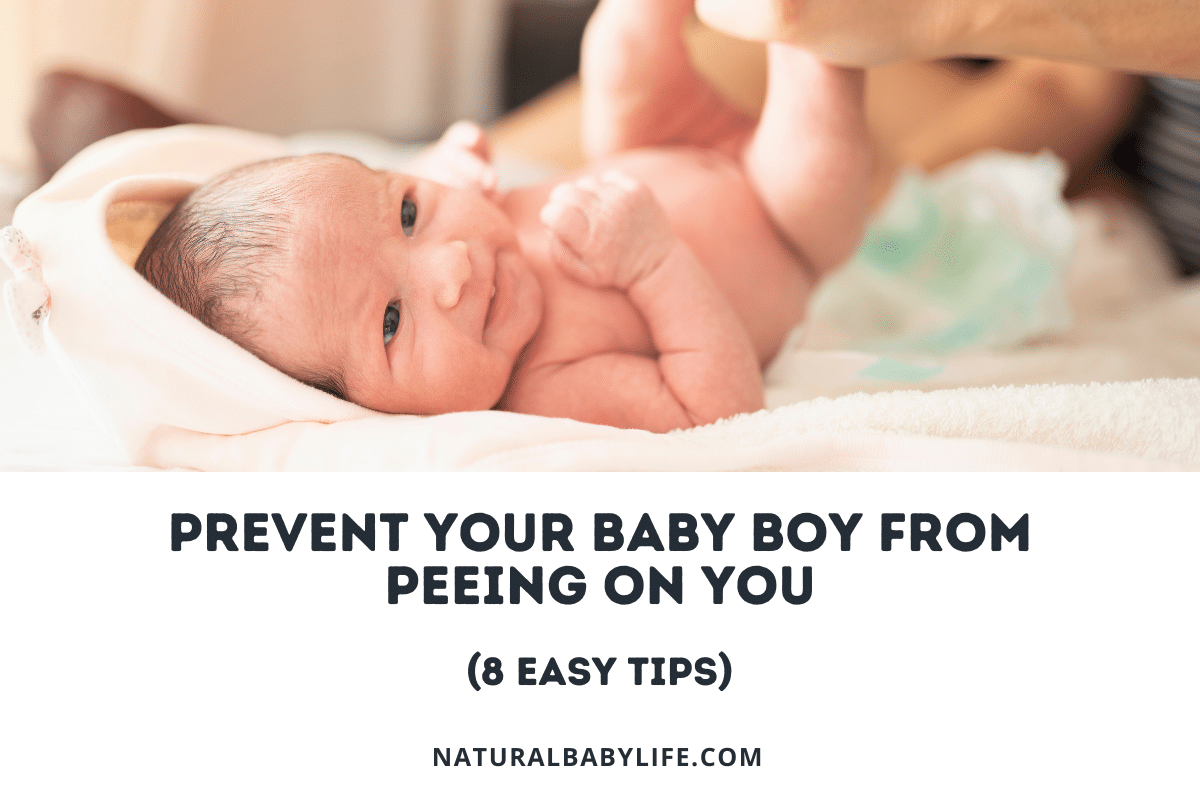When dealing with a multitude of baby sleep issues, the last thing you might worry about (until it happens) is the baby’s legs getting stuck in the crib. Fortunately, this common problem, while scary, doesn’t usually cause any harm–other than lost sleep, of course.
The best way to keep your baby from getting their legs stuck in the crib is to make sure the crib is up to standard and use a sleep sack or wearable blanket. Crib bumpers (even mesh ones), crib tents, and sleep positioners should be avoided due to safety concerns.
Like most baby-related problems that parents have to tackle every baby is different. A solution that works for one is definitely not guaranteed to work for another so I’m going to explain a bunch of things you could try to help keep your baby injury-free in the crib.
Table of Contents
How to avoid baby’s legs getting stuck in the crib
You can take a few steps to keep your little one’s legs from getting stuck in the crib slats.
Make sure your crib is up to standard
The first place to start to protect your little baby’s legs is the crib itself.
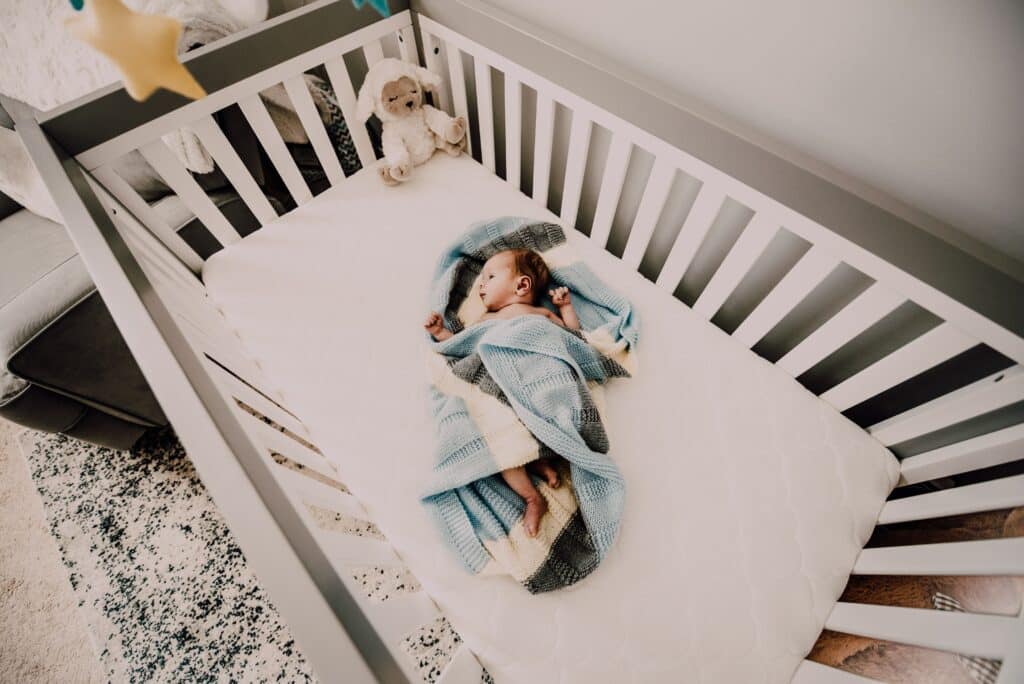
While it could be tempting to use the old family crib that has been passed down for generations you need to make sure that the design and materials are up to the current safety standards. According to the book Caring for Your Baby and Young Child, written and endorsed by the doctors at the AAP, your crib should meet these standards:
- Less than 2 and 3/8 inches between the crib slats. This is the big one because it totally prevents your baby’s head from getting lodged between the slats and makes it more difficult for legs to get in there too.
- No cutouts or irregular designs in the crib slats or headboard that could allow a baby to get their head or other body parts stuck.
- No corner posts that a baby’s clothes could get hung on.
- Overall sturdy frame with tight and secure screws and bolts. Babies, even little ones, can cause a surprising amount of wear and tear on something like a crib so be sure to check it often.
- Lead-free paint. While this should be a given with today’s safety standards, using an older crib means that you will need to do your homework to ensure that it is safe.
Here is a diagram showing a safe and secure crib option:
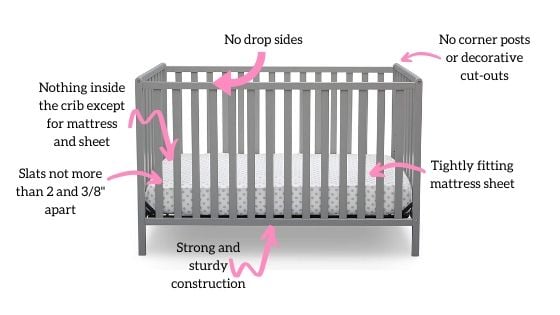
The exact crib in the picture is the Delta Children Heartland 4-in-1 convertible crib. It has been certified as safe by the JPMA, CPSC, and ASTM as meeting or exceeding their standards. It has also been tested for lead paint and other toxic materials. It’s available in a bunch of colors and you can get it here (with free Prime shipping on Amazon) for a price that won’t break the bank! Plus, it will last you many years as it converts all the way up to a full twin bed.
Use a sleep sack or wearable blanket to keep legs confined
I’ve talked about the benefits of sleep sacks before and explained that they can work well to help your baby feel safe and secure while they are trying to go to sleep. They also help keep the baby warm and sleep longer without waking themselves up with flailing arms or scratches.
Another benefit of sleep sacks is that they keep the legs of your baby confined inside the sack. That means they won’t find their way in between the crib slats!
If you choose to go this route just be sure that you pick the right sleep sack for your little one’s needs. There are MANY options available (check the latest styles and reviews on Amazon) in the market today ranging from both arm and leg enclosures to basically baby-sized sleeping bags.
The best one will be snug and secure so that your baby can’t wiggle out of it and cause problems. Another solid strategy is to get one of the convertible sleep sacks you can change as your baby grows to suit her age-specific needs.
Keep in mind that some babies also just plain don’t like sleeping in a confined position. They never worked well for my son but we have friends that swear by them!
Don’t do anything – yes really!
You’re welcome for this super helpful advice!
Jokes aside, the reality is that there is actually a very small chance that your baby will be seriously hurt by getting their legs caught in a crib. While you may hear some stories of dads having to take apart cribs to get a fat little leg out most of the time your baby will just cry in discomfort until you come to rescue them.
That’s because cribs are widely tested and in the United States, baby sleep devices must meet federal standards.
In fact, studies have shown that while crib-related injuries are some of the most common problems for babies the vast majority are not serious. The serious ones mostly involve a child climbing out of a crib and falling onto the floor which is a completely different issue.
For stuck legs, you’re likely to end up with a little bruising. Of course, if your baby is starting to stand and even THINKING about climbing up the crib side then you need to think seriously about a solution that will either keep him in the crib or make the decision to move on to a real bed that is closer to the floor.
By the way, I’ve written a whole article about skipping the crib that you can find here. I’ve also found 7 crib alternatives that you might want to check out as well right here!
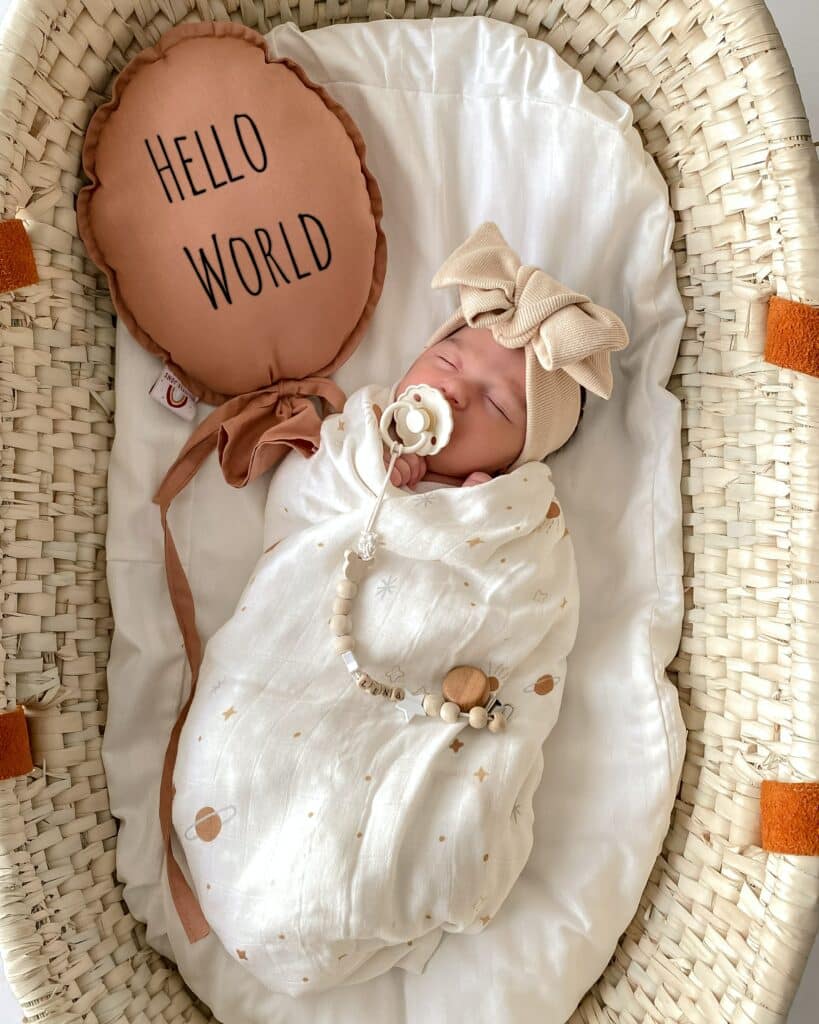
Avoid crib bumpers
Note that I only have two real options listed to help keep your baby’s legs inside the cribs. That’s because almost everything else has been warned against by the medical community.
In 2016 the American Association of Pediatrics (AAP) released an update to their sleep recommendations that specifically says not to use crib bumpers (even mesh ones) along with soft bedding, blankets, pillows, and soft toys because they have been connected with an increased risk of SIDS (Sudden Infant Death Syndrome). The reasoning is that babies’ bodies aren’t always able to detect if they aren’t getting enough oxygen because they haven’t developed the physiological response yet. If they have their nose pressed up against a soft pillow, for instance, they could easily suffocate without being able to do anything about it.
Essentially, the AAP recommends that you have a completely bare crib whenever you let your infant sleep in it. With around 3,500 sleep-related infant deaths happening each year in the US, I’m going to take their advice and so should you!
Mesh tent-style canopies and crib covers have caused problems too
Now I mentioned earlier that you shouldn’t use a crib bumper even if it’s one of the mesh-style ones that are super popular right now. On the surface, the mesh bumpers look great because they solve the same problem as the old padded bumpers but are made from breathable material so they don’t pose a suffocation risk.
However, the AAP still recommends against them because they can still increase the risk of strangulation or entrapment. Essentially, your baby could still pull the bumper down and get their neck hung over the bumper, causing choking. The bumper could also be pulled apart from the crib completely and become wrapped around your baby accidentally.
Some products claim to overcome the deficiencies of all of the other bumpers and they are the mesh canopies, tents, or other coverings for cribs. Basically, they are pop-up tents that you sit down inside the crib, and then you put the mattress inside the whole tent.
This leaves you with a crib that your baby shouldn’t be able to crawl out of or get their legs stuck in between the slats but you will still need to be mindful of accessories.
It sounds like the perfect solution, right?
Well, unfortunately, there have been many instances of injuries related to these tents and at least a couple of deaths in the recent past. Personally, I wouldn’t trust these either. The AAP hasn’t issued a specific warning against crib tents, but it does remain firm on the stance that you should avoid all unnecessary items to avoid introducing unnecessary risk.
Do not use sleep positioners
Sleep positioners are another popular product marketed to parents that want to keep their babies from moving around too much while they are sleeping, potentially injuring themselves. Unfortunately, just like soft bedding or blankets, these positioners can be deadly for infants if they move enough to put themselves at risk for suffocation.
They are intended to work either by ‘nesting’ the baby into a set position or by placing padding on all sides of the baby so that they don’t roll around inside the crib. While this sounds great in theory it is not backed by science and could actually increase the risk of SIDS in many cases.
The crazy part is that many of these products are advertised to help reduce the risk of SIDS in infants even though the AAP recommends having nothing inside the crib.
Because of the medical claims, some of these positioners are even regulated by the FDA which also officially recommends AGAINST using them. The ones that aren’t considered medical devices are governed by the Consumer Product Safety Commission which adds the third vote against the products.
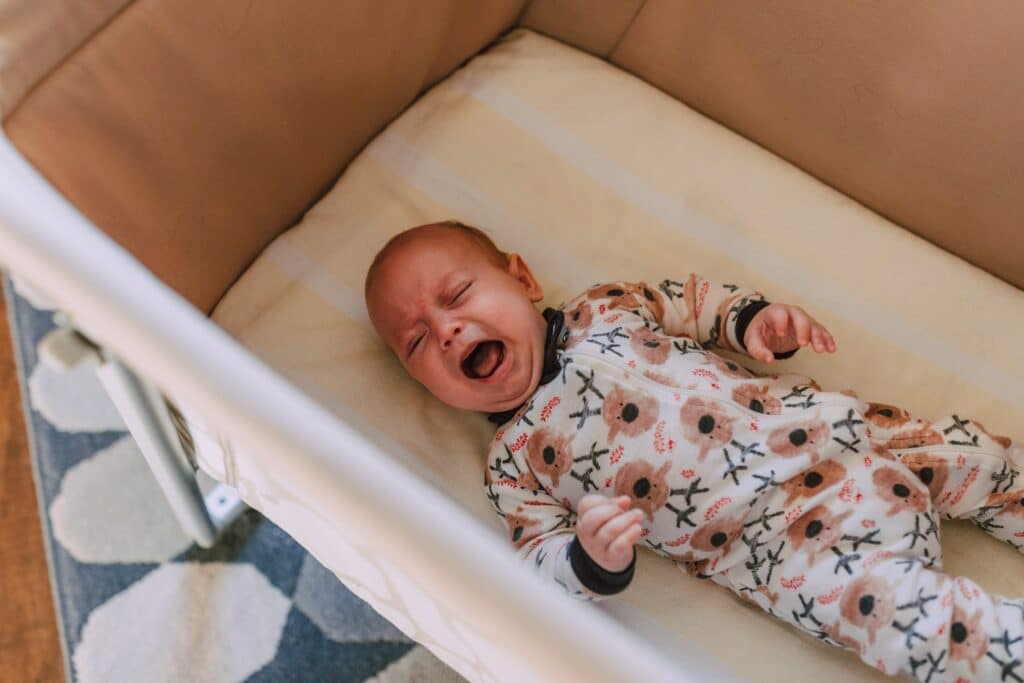
Frequently Asked Questions (FAQs)
Can babies’ legs get stuck in cribs?
The U.S. Consumer Product Safety Commission places strict requirements on crib dimensions to ensure safety. Crib slats can be no more than 2 3/8″ apart so the baby’s body cannot go through the slats.
A baby’s foot may slip through, but it should cause no more than a sleep disturbance as opposed to an actual injury.
Is there a safe crib bumper?
The American Academy of Pediatrics does not endorse the safety of any type of crib bumper. Padded bumpers may not be legally sold in the United States.
What is a safe crib bumper alternative?
While only padded bumpers are banned in the United States, the AAP recommends that an infant sleep in a crib bare of everything except a fitted sheet.
Final thoughts
As you can see there are a lot of things that you need to avoid when it comes to preventing your baby’s legs from getting stuck in the crib. Fortunately, there are also a few things that you can try that can help keep your baby safe without causing other problems.
Hopefully, you’ve found something that works for you!

